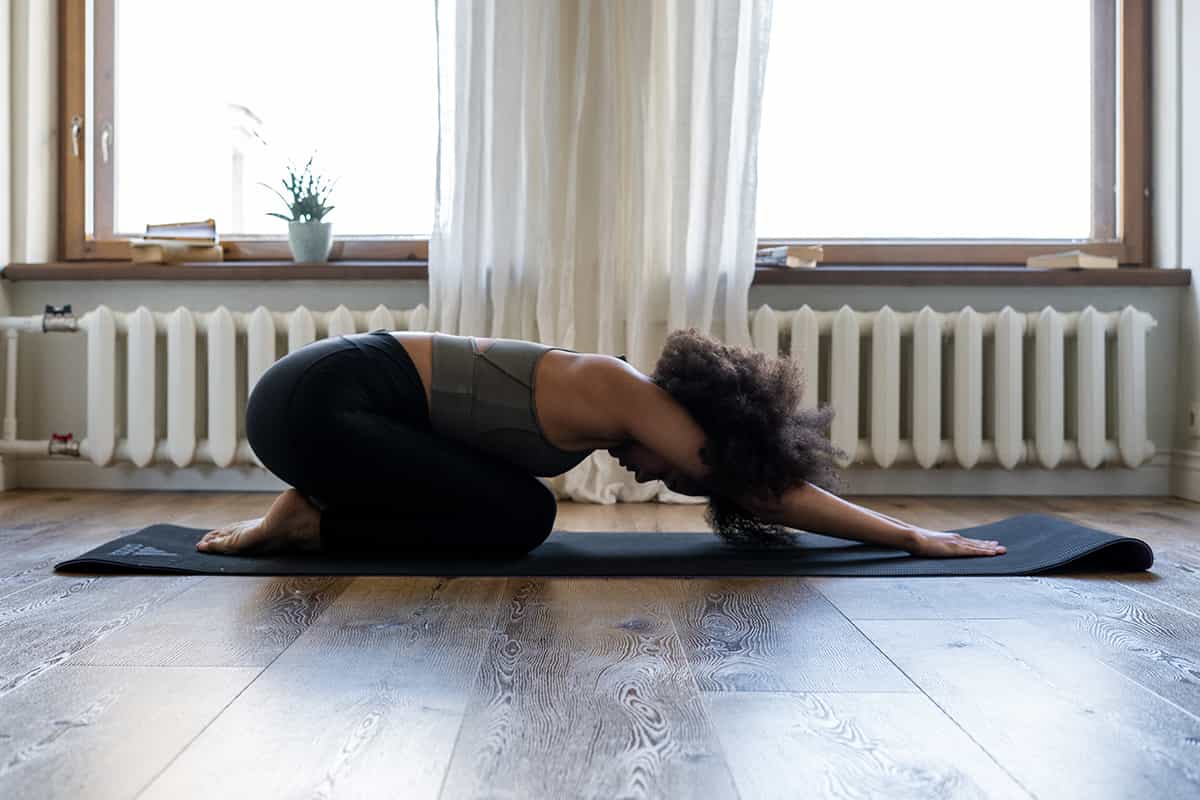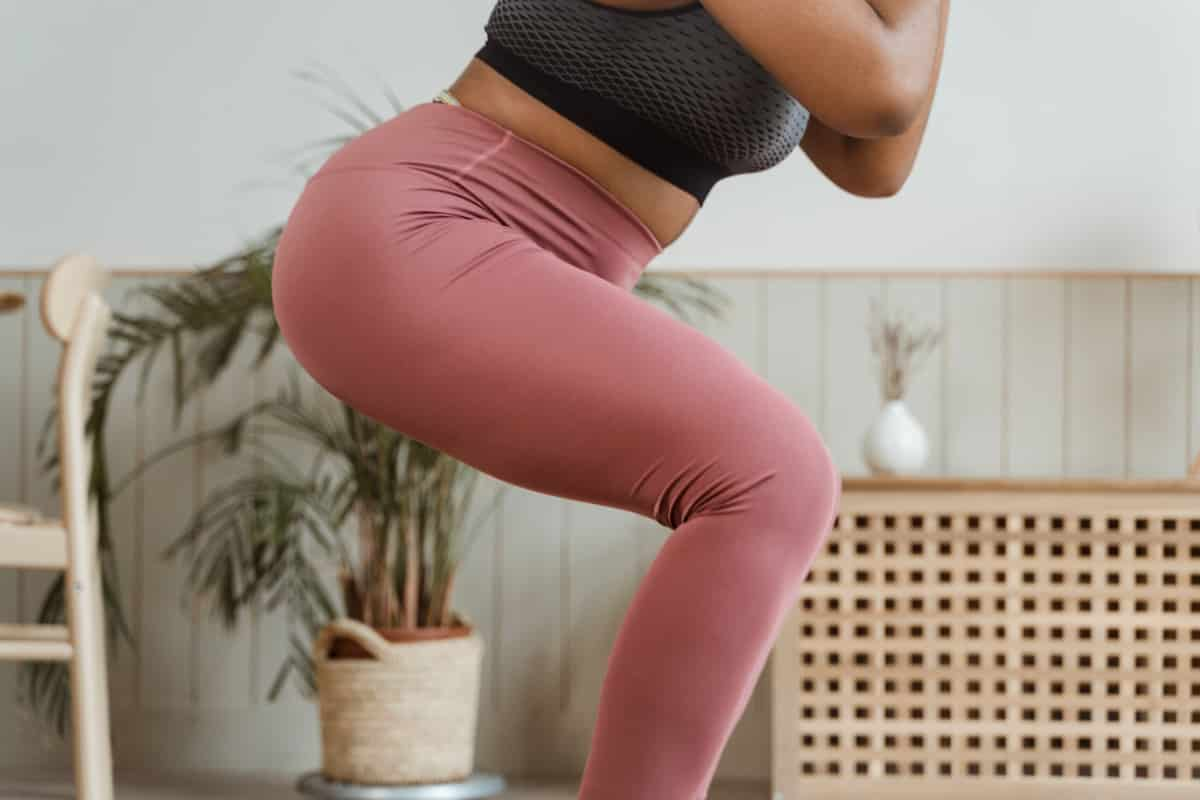Yoga Poses to Relieve Joint Pain

Many women in midlife experience pain in their knees, hips, hands, shoulders, and spine. Exercise is the key to managing and preventing joint aches and pains. Although there are many ways to move to help reduce discomfort, yoga might be a great choice for you.
Why Try Yoga?
Here are a few reasons to consider trying out yoga for joint pain:
- Yoga has been shown to be safe, feasible, and enjoyable for people with both rheumatoid arthritis and osteoarthritis.
- People with joint pain have proven more likely to stick with yoga compared to other exercises, perhaps because yoga feels safe and approachable.
- Yoga and its deep breathing component can help alleviate other menopause symptoms, too, like hot flashes, anxiety, and depression.
- Yoga resources are increasingly available online, so you can easily try out poses in the comfort of your own home on your own schedule.
What if Yoga Makes My Joints Hurt?
Chronic aches and pains are hard to avoid, but yoga creates a safe space to experiment and find more comfortable and tolerable ways to explore movement. All poses have modifications – ways to scale a pose down to make it less intense or more accessible to different bodies.
Keep in mind that your yoga practice is yours. Yoga teachers typically want you to honor what feels right in your body. That might mean taking a resting pose or skipping a pose that does not feel good, even if others in the class continue to flow.
If you’re new to a yoga class, arrive a bit early to meet your teacher. Let them know about your specific pain concerns. They will probably be able to offer some helpful ways in which you can modify specific poses to make them more comfortable.
What Is the Best Type of Yoga for Joint Pain?
Over its long history, yoga has branched into various types. Because yoga comes in so many flavors, there’s likely a style (or multiple) that suits you better than others.
Hatha Yoga
If you’re struggling with joint pain, Hatha yoga can be a great place to start. While the term “Hatha” refers to most kinds of Westernized yoga, the classes you see marketed as Hatha yoga typically involve a series of static, gentle postures. While Hatha is often viewed as beginner-friendly, don’t be mistaken – it can be mentally and physically challenging!
Vinyasa Yoga
Vinyasa yoga can also be a good fit for joint pain, depending on the class’s pace and intensity level. Vinyasa classes are characterized by “flows” in which multiple poses are consecutively linked.
A slower Vinyasa class can be a great choice if you’re suffering from joint pain because you’ll be able to enjoy Vinyasa’s fluid quality with plenty of opportunities for modifications. However, faster or more intense classes might be more challenging if you’re managing pain, as they can move quickly and be more stressful on the body.
Restorative Yoga
Restorative or Yin Yoga both offer the chance to really slow things down. Yin Yoga is based around deep stretching, while Restorative Yoga seeks to calm the nervous system. Both make use of props (like blocks, blankets, and bolsters) so that you can comfortably access poses for longer periods of time.
5 Yoga Poses to Help Relieve Joint Pain
Forward Fold
- How-to: Stand with feet hip distance apart. Fold at your hips and reach your fingertips towards the floor, bending your knees as much as you need to so that you can relax your neck and spine. Nod your head “yes” and “no” if it helps further release tension.
- Benefits: Feel a deep stretch through the back of your body, from your neck to your ankles.
Bound Angle Pose (aka Cobbler’s Pose)
- How-to: Sit with your knees bent and soles of your feet together. Fold forward at your hips, thinking about bringing your navel to the floor instead of your head to your feet. Play with moving your feet further or closer to your body to get the right amount of stretch.
- Benefits: Enjoy a range of motion around your hips that you don’t get in your typical day.
Twisted Low Lunge
- How-to: Lunge forward so that your front foot is stacked below your knee and your back knee is on the mat (it may help to have a towel for cushioning under this back knee).
- You can bring your hands to the ground for support or lift them overhead to deepen the stretch in the back hip flexor. After holding for a few breaths, switch sides.
- Option: Add an upper-body twist by bringing one hand to the mat and lifting the other to twist towards your front knee, feeling this rotation through your mid-back.
- Benefits: The lunge opens the hips while the twist stretches the shoulders.
Bridge Pose
- How-to: Lay on your back with arms by your side. Bend your knees and put your feet on the floor, hip-width apart and under your knees. Press your feet into the ground and lift your hips up.
- Option: Pull your shoulder blades together roll onto the back of your arms for extra chest opening.
- Benefits: Enjoy extension (arching) through your spine and opening through the hips and shoulders.
Cat & Cow Pose
- How-to: On hands and knees, create a square shape with your body (hands under shoulders and knees under hips). As you inhale, create an arch in your spine as you lift your chin and tailbone toward the ceiling. As you exhale, reverse the curve and round your back by bringing your chin and pubic bone towards each other.
- Alternate between cat and cow, gently exploring arching and rounding through the entire length of your spine.
- Benefits: This offers gentle movement through your wrists, shoulders, and spine at the pace that you can control.
Sign up for more unique women’s health content
By submitting this form, you agree to the Lisa Health Privacy Policy and Terms of Use


